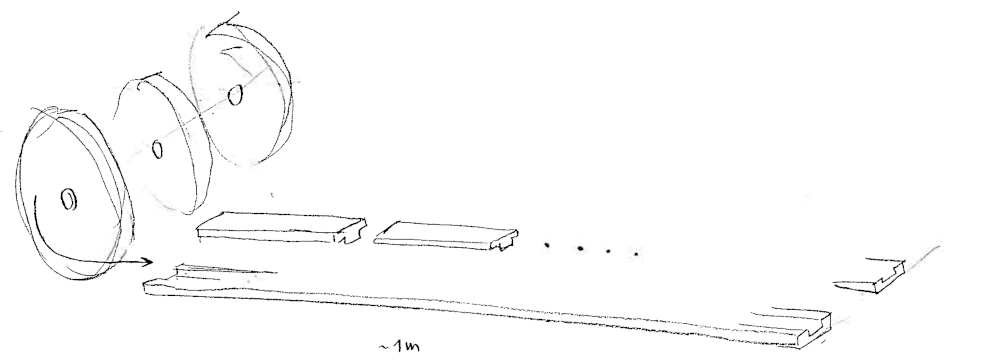| Here is one way to make ribbons out of 16 0.5-mm clear fibers:
In this picture, a 9mm-wide channel is 3d printed. Then a 9mm wide
strip of mylar is placed at the bottom, then 16 fibers are laid in
side-by-side. Next a 2-part mold-making silicon compound is drizzled
over the top, and the top is pressed on top. Excess compound squeezes
out on the sides, and the material cures in 24h. You can now lift out
assembled ribbon.
fiber_ribbon_bot.stl fiber_ribbon_top.stl fiber_ribbon_mylar.dxf | |
There are 8 (fibers per block) × 8 (blocks per row) × 12 (rows per layer) × 4 (layers per panel) × 7 (panels per quadrant) × 4 (quadrants) = ~90k fibers. Fibers come in ribbons of 16, so ~5000 ribbons. If we have a 2-meter manufacturing table with 10 parallel trays, and we use fast-cure (~2h), warm silicone (4x/day), we can do 10 8-meter ribbons per day, or 5k ribbons in 500 days, or 100 5-day weeks. Looks like we need to look for fast-curing silicone for a continuous-feed production machine, or ...... Here is a 4-hour curing silicon: BBDINO brand, 4h at room temperature, faster at elevated temps.
and black film for backing:
|

|
| Fiber ribbons at
Saint-Gobin
Link about minimum bending radius: "the bending radius of fiber should be more than 150 times the diameter of the fiber cladding". |

|
| Ribbon machine needs 16 corrugated cardboard reels
Found single-ply cardboard at Artisan, Hobby Lobby frame desk. Check Boxes and Bubbles, Office Depot.
Cut files: (on the Boss, scale by 97.4%)
- Cut parts |

|
